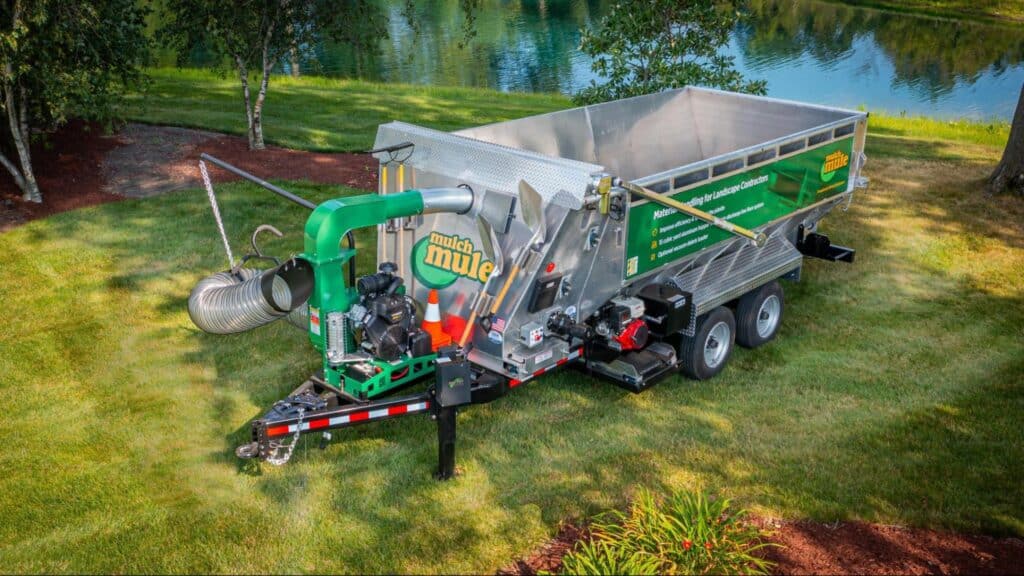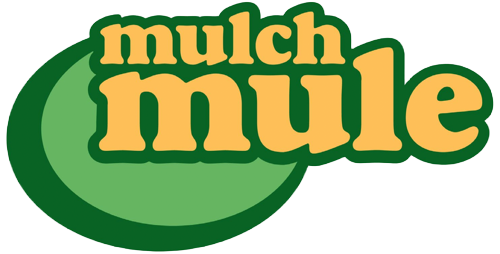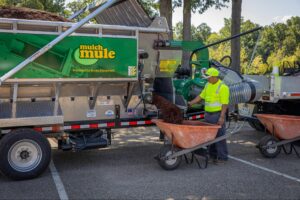Running a successful landscaping business requires more than a passion for creating beautiful outdoor spaces—it demands careful planning, efficient operations, and the ability to overcome common industry challenges. High labor costs, inefficient workflows, time management issues, workplace safety risks, and scaling hurdles can all derail profitability if not addressed proactively.
This article outlines the key challenges facing landscaping businesses and provides practical, actionable strategies to turn obstacles into opportunities for growth and success. By streamlining processes, optimizing workforce management, and investing in modern equipment, you can improve productivity and build a resilient business capable of thriving in a competitive market.
Common Challenges in Landscaping
Landscaping businesses regularly encounter several obstacles that threaten both efficiency and profitability. Inefficient workflows and inefficient processes drain resources, while time management issues can lead to missed deadlines and frustrated clients. Meanwhile, safety concerns add both direct costs and impact team morale. Finally, rapid growth brings scaling challenges that can stretch your resources thin.
In essence, companies struggle with:
- Rising Labor Costs: High wages, seasonal staffing, and a limited pool of skilled workers raise expenses and may derail budgets.
- Inefficient Processes: Manual material handling and disorganized project management generate waste and slow progress.
- Time Management Issues: Overbooking, inaccurate estimates, and poor scheduling often result in missed deadlines.
- Workplace Safety Risks: Physically demanding tasks, inadequate equipment, and insufficient training can lead to injuries and increased insurance premiums.
- Scaling Challenges: Rapid expansions require considerable investments in personnel, equipment, and infrastructure, often straining cash flow if not carefully managed.
Overcoming these issues is critical to running a productive, profitable landscaping enterprise.
Tackling High Labor Costs and Workforce Shortages
Labor is frequently the biggest expense in the landscaping industry. Rising wages and limited skilled labor create an expensive environment where every hour of work must be optimized. Seasonal spikes in demand compound the challenge, making it vital to plan budgets and staffing levels effectively.
Smart Strategies:
- Invest in Automation: Replace repetitive manual tasks with mechanized tools to reduce labor dependency. Modern trailers and specialized machines can significantly reduce the hours spent on manual loading and unloading, freeing up personnel for higher-value tasks.
- Optimize Scheduling: Arrange projects by geographic proximity to minimize travel time and group time-sensitive tasks to avoid daily disruptions.
- Focus on Retention: Retaining trained workers is more cost-effective than hiring and training new ones. Foster a positive work environment with fair wages, growth opportunities, and recognition for good work.
- Cross-Train Your Team: A versatile workforce that can cover for colleagues or quickly adjust to new roles helps prevent bottlenecks and enhances overall productivity.
Balancing automation, strategic scheduling, and strong employee engagement will help you manage labor costs without sacrificing service quality.
Example: Managing High Labor Demands
Imagine a scenario where a landscaping business traditionally spent entire weekends manually unloading large mulch shipments. After transitioning to a mechanized trailer system, unloading times were drastically reduced, leading to fewer overtime hours and less physical strain on workers. While the specific figures may vary from one operation to another, such mechanization can help reduce downtime and improve overall efficiency.
Streamlining Inefficient Processes
Inefficient workflows not only slow progress—they add hidden costs at every step. Manual tasks such as shoveling mulch or relying on outdated scheduling methods can result in wasted hours, increased fuel expenses, and reduced crew morale.
Common Pitfalls Include:
- Manual material handling that consumes valuable time.
- Disorganized project management leading to crew confusion and project overlaps.
- Lack of standardized procedures, resulting in rework and material waste.
Effective Solutions:
- Adopt Modern Equipment: Machinery that automates repetitive tasks significantly cuts down on manual labor while accelerating project completion.
- Implement Digital Job Management: Use scheduling and tracking software to improve transparency so that crews are well-informed about their tasks.
- Standardize Procedures: Develop repeatable processes that reduce confusion and ensure consistent quality.
- Review Performance Metrics: Monitor key performance indicators regularly to identify and eliminate inefficiencies.
- Consider Specialized Trailers: Equipment like the Mulch Mule trailer utilizes a live floor system and quick-discharge mechanism for more efficient material handling. While specific timeframes may vary, these features substantially accelerate the unloading process compared to manual shoveling.
Modernizing your job management and leveraging efficient equipment enables your team to focus more on client interactions and creative landscaping tasks that drive revenue.
Example: Eliminating Redundant Labor
A property management team once faced long weekends dedicated to manually unloading large mulch shipments. By adopting a mechanized trailer system, they reported a significant reduction in unloading time and overtime costs, while also reducing crew fatigue. Although exact numbers depend on the particular operation, the overall efficiency gains are clear.
Improving Time Management and Meeting Deadlines

Time is a critical resource in landscaping. Project delays not only increase costs but can also negatively affect customer satisfaction and business reputation. Common causes of delays include poor scheduling, mismanaged expectations, and unreliable equipment.
Best Practices Include:
- Accurate Project Estimation: Carefully measure job sites, consider terrain and environmental factors, and allow extra time for weather delays.
- Effective Scheduling: Group geographically proximate projects to reduce travel time, and allocate dedicated time blocks for urgent jobs.
- Clear Communication: Keep your team and clients informed about potential delays or issues.
- Equip for Efficiency: Invest in quality, reliable equipment to reduce downtime.
- Plan for Uncertainties: Build in buffer time within schedules to absorb minor delays without disrupting overall timelines.
Delivering projects on time enhances customer satisfaction and improves the capacity to take on additional work, thereby boosting business growth.
Example: Technology in Action
Consider a mid-sized landscaper who serves commercial mulching clients. In some reports, such operations have found that replacing manual distribution methods with an automated trailer system can lead to notable reductions in labor and processing time, potentially allowing a reduction in crew size. Although the exact reduction varies, the benefits include better productivity and lower long-term costs that help offset equipment investments.
Enhancing Workplace Safety
Landscaping work is inherently physical, involving heavy lifting, repetitive motions, and extended hours under varying weather conditions. Each injury not only affects worker health but also incurs significant indirect costs like absenteeism, retraining, and higher insurance premiums.
Key Safety Measures:
- Comprehensive Training: Regularly educate employees on proper lifting techniques, safe equipment operation, and hazard recognition.
- Routine Equipment Maintenance: Keep all machinery in optimal condition to reduce the chance of equipment failures.
- Clear Operational Protocols: Establish and enforce clear safety guidelines and procedures for common tasks.
- Preventative Maintenance: Periodically inspect machinery and tools to identify and fix potential issues before they cause accidents.
- Cultivate a Safety Culture: Encourage workers to report hazards immediately and reward safe practices on the job.
By reducing manual labor through automation and using well-maintained equipment, landscaping companies can significantly improve workplace safety and boost overall morale.
Example: Reduced Injury Incidents
In fields like golf course maintenance—where crews once manually hauled heavy materials such as clay and gravel for tee-box renovations—the introduction of automated trailers has been shown to lessen physical strain. Although precise figures may vary, such improvements in equipment efficiency have been associated with fewer work-related injuries, lower workers’ compensation claims, and a more positive workforce environment.
Overcoming Profitability Challenges and Scaling Your Business
Balancing profit margins while planning for growth is a delicate challenge in the landscaping industry. Rapid expansion often means investing in additional equipment, personnel, and infrastructure—costs that can jeopardize profitability if not carefully managed.
Scaling Challenges to Address:
- The risk of resource overuse during high-demand periods.
- Administrative inefficiencies that could affect billing and scheduling.
- Limited or unpredictable financing options that complicate large-scale investments.
- Seasonal revenue fluctuations that complicate year-round planning.
Strategies for Sustainable Growth:
- Meticulous Cost Tracking: Use cloud-based bookkeeping to monitor expenses and anticipate financial issues early.
- Focus on High-Margin Services: Identify services that offer the most attractive profit margins and prioritize them.
- Strengthen Administrative Systems: Implement comprehensive software solutions for clear and efficient management of projects and invoicing.
- Incremental Expansion: Test new services or territories gradually to verify demand before making large investments.
- Secure Long-Term Partnerships: Build strong, lasting relationships with clients to ensure consistent business flow even during slower periods.
By focusing on core operational strengths and adopting strategic growth practices, landscaping businesses can make sound expansion decisions that safeguard profitability.
The Mulch Mule: A Key Solution to Common Pitfalls

A pivotal strategy in avoiding pitfalls such as high labor costs, manual inefficiencies, and safety risks is leveraging modern, specialized equipment. The Mulch Mule trailer is designed to address many challenges by combining speed, versatility, and safety into one innovative system.
Year-Round Efficiency
Many assume that specialized equipment only benefits certain seasons, but the Mulch Mule is engineered for year-round versatility. Its adaptable design and live floor system efficiently handle various bulk materials—from mulch and soil to rock and debris—for tasks including mulching, planting, hardscaping, and even fall cleanup. This consistent performance throughout the year delivers increased productivity regardless of the season.
Reduced Labor and Safer Operations
Manual tasks such as shoveling and wheelbarrow hauling often lead to employee fatigue and injuries. The Mulch Mule trailer automates loading and unloading with its live floor system and quick-discharge mechanism, designed to significantly speed up material handling. Although specific timing such as “45 seconds” to empty the hopper is not universally documented, this technology can dramatically reduce the labor required for these tasks and lower associated risks.
Live-Floor System and Curb-Side Discharge
The trailer’s live-floor system operates in both forward and reverse, enabling precise loading and unloading. Its curb-side discharge feature directs material exactly where needed, keeping job sites tidy and reducing cleanup time.
Higher Carrying Capacity and Swift Operations
With a 15-cubic-yard capacity and robust construction, the Mulch Mule allows for hauling larger material loads per trip. Its design facilitates rapid turnaround on jobs, enabling faster project completions and potentially reducing the size of crews required. Many landscaping professionals have noted that automating material handling not only saves time but also helps balance labor costs and improve overall productivity.
Boosting Profitability and Employee Satisfaction
Investing in equipment like the Mulch Mule not only controls labor expenses but also improves working conditions. By reducing manual strain, crews can focus on higher-value tasks, enhancing overall morale and service quality. Over time, these efficiency gains can help offset the initial investment while promoting sustainable business growth.
Watch the video below to learn how Mulch Mule can take the load off your employees and pay for itself in the long run by increasing overall profits for your business over time.
Additional Business Insights for Sustainable Growth
Modernizing operations isn’t just about new equipment—it’s also about continuous improvement across your entire organization. Involve your team in refining workflows and use feedback to drive small changes that add up to substantial savings. Likewise, smart growth sometimes means turning down projects that don’t align with your core expertise or stretch your limited resources.
A balanced approach to expansion, gradual scaling of services, staff, and equipment, and adopting eco-friendly practices can differentiate you from competitors and support long-term success. In addition, don’t overlook marketing efforts; even the most efficient operations need continuous brand visibility via social media, local partnerships, and word-of-mouth.
Embrace Efficiency and Innovation for Lasting Success
Overcoming landscaping business pitfalls involves identifying major cost centers, streamlining operations, prioritizing safety, and making strategic investments. Equipment like the Mulch Mule trailer plays a vital role in reducing manual labor, enhancing workflow efficiency, and boosting profitability year-round. Although specific performance figures may vary from one operation to another, the overall advantage of such technology is clear.
Take the next step in a future built on efficiency and smart growth. Schedule a live demonstration of the Mulch Mule trailer to see how modern solutions can transform your landscaping operations. With a commitment to professional expertise, proven safety protocols, and innovative equipment, your landscaping business can remain competitive, resilient, and ready to harness new opportunities.



